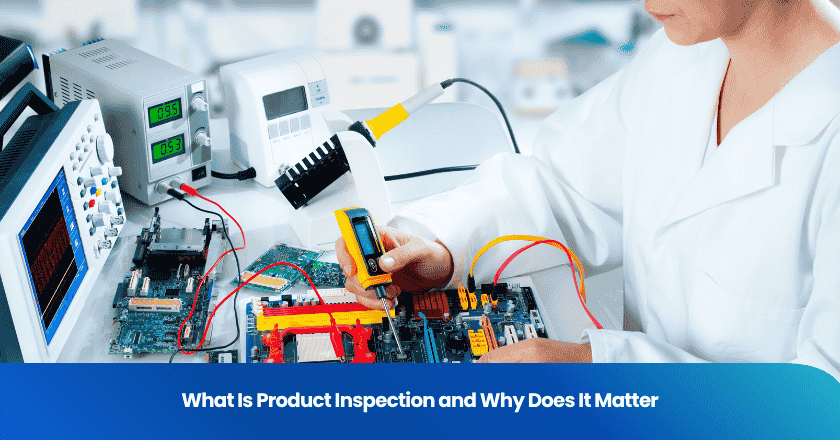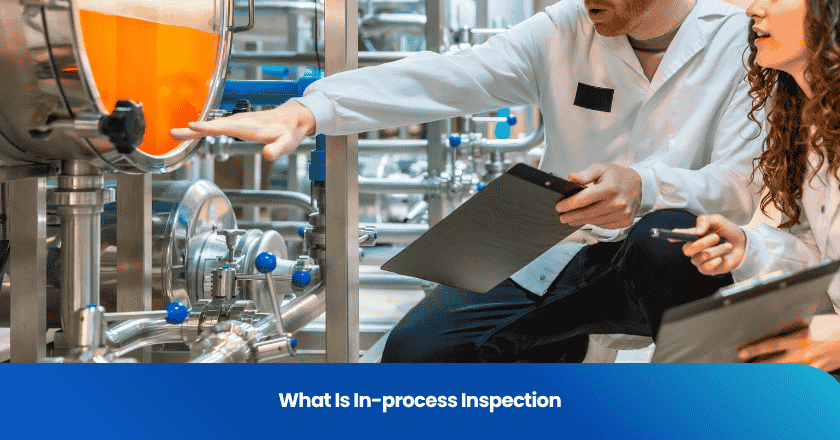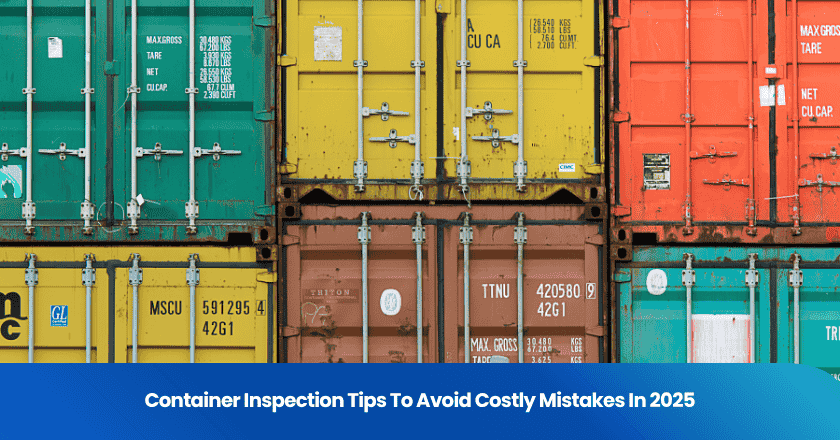
You rely on product inspection to confirm that goods meet strict quality control standards before reaching customers. This process protects you from defective or unsafe products and helps maintain your business reputation. Inspection products play a vital role in building customer trust and satisfaction.
Consider these impacts:
| Quality Control Metric | Impact on Customer Satisfaction |
|---|---|
| Effective quality control measures | Ensures products meet quality standards, leading to higher satisfaction. |
| Product safety and reliability | Minimizes risk of unsafe products, enhancing customer trust. |
| Customer service improvements | High-quality products correlate with better customer service. |
Product Inspection Overview
What is Product Inspection
You need to understand product inspection as a critical process in quality control. This process involves measuring, examining, and testing products, parts, or processes against specific requirements or standards. International quality control standards define quality inspection as a method to ensure that goods meet defined quality standards and product specifications before they reach the market. You use product inspection to verify that each item aligns with your expectations and those of your customers.
Industry experts emphasize the importance of product inspection in supply chain management.
- You maintain quality throughout the supply chain by conducting inspections at different stages.
- You can choose from several types of inspections, such as pre-production, during production, pre-shipment, and container loading.
- Quality source inspectors act as gatekeepers, ensuring products meet your standards before leaving the supplier’s site.
- These inspections help you catch issues early, which means you deliver products that meet customer expectations and protect your company's reputation.
Objectives of Inspection
You conduct product inspection with several key objectives in mind. Leading quality assurance organizations outline these primary goals:
| Objective | Description |
|---|---|
| Collect Information | Gather data on product performance against established quality standards. |
| Correct Poor Quality | Address and rectify issues in manufactured products to uphold standards. |
| Enhance Reputation | Build a positive reputation by consistently delivering high-quality products. |
| Identify Failures | Determine the root causes of failures in finished products. |
You ensure consistent product quality, especially when working with third-party suppliers. Inspection serves as a final quality check before you deliver products to customers. By conducting inspections at every stage of production, you prevent product recalls and reduce resource wastage.
Product inspection helps you prevent defects in manufactured goods. Early detection of defects during manufacturing allows you to make timely corrections, which reduces the cost of rework or scrapping defective products. You avoid unexpected delays in shipping and delivery by addressing quality issues promptly. Catching defects during production minimizes waste and saves on materials and labor costs. Ensuring product quality leads to higher customer satisfaction and strengthens your brand reputation.
Tip: You should always align your inspection process with established quality standards and product specifications. This approach supports your quality assurance efforts and helps you deliver reliable inspection products to the market.
Product Inspection Process
Key Steps in Inspection
You follow a structured process to ensure products meet quality inspection standards and product specifications. Each step in the inspection process targets a specific stage in the supply chain. The table below outlines the main steps you encounter when managing inspection products:
| Step Number | Inspection Type | Description |
|---|---|---|
| 1 | Pre-Production Inspection (PPI) | Focuses on raw materials and initial setup before mass production. |
| 2 | During Production Inspection (DUPRO) | Identifies defects while production is ongoing, allowing for timely corrective actions. |
| 3 | Pre-Shipment Inspection (PSI) | Final check to ensure products meet specifications before shipment. |
| 4 | Container Loading Inspection (CLI) | Verifies correct loading of products and their condition during transit. |
| 5 | Other Inspection Services | Additional services like product sorting and rework to address non-conformities. |
You adapt the inspection process based on the industry and product type. In electronics, you prioritize functionality testing and safety compliance. You use advanced non-destructive testing methods to detect internal defects. In textiles, you rely on visual inspection and automated optical inspection systems to identify surface defects such as stains or stitching errors. These types of quality inspection help you maintain high standards and prevent defective goods from reaching customers.
Note: You should always tailor your inspection procedures to the specific requirements of your industry and the nature of your products. This approach supports your quality assurance efforts and strengthens your quality control system.
Who Conducts Inspections
You rely on qualified professionals to carry out product inspection and uphold quality assurance. The following roles play a key part in the inspection process:
- Qualified Person (QP): Oversees compliance with regulatory standards and manages product release.
- Responsible Person (RP): Handles compliance documentation and ensures products meet marketing authorizations.
- Third-Party Inspection Services: Provide independent evaluations to ensure objectivity and accuracy in quality inspection.
You select inspection personnel based on their expertise and the complexity of your inspection products. In many cases, you engage third-party organizations to verify that goods meet product specifications and industry standards. This practice enhances transparency and helps you maintain trust with your customers.
Types of Inspection Products
Inspection products play a crucial role in maintaining quality throughout your supply chain. You encounter several types of quality inspection, each designed to address specific risks and requirements at different production stages. Understanding these inspection products helps you prevent defects, reduce costs, and deliver reliable goods to your customers.
Pre-Production Inspection
You use pre-production inspection to verify that all materials and components meet your required standards before manufacturing begins. This step helps you avoid costly errors and delays by ensuring supplier facilities and processes align with your expectations. You also assess the quality and quantity of raw materials and set clear expectations for production timelines and quality standards.
- Ensures all materials and components meet required standards before manufacturing.
- Helps prevent costly errors and delays.
- Verifies supplier facilities and processes align with specified standards.
- Assesses quality and quantity of raw materials.
- Sets clear expectations regarding production timelines and quality standards.
By identifying potential issues early, you prevent defects and non-compliance later in the process. This proactive approach saves time and resources, ensuring your final products achieve higher customer satisfaction.
In-Process Inspection
During in-process inspection, you monitor products as they move through production. This allows you to catch defects before they become widespread. You use several techniques to evaluate quality at this stage:
| Inspection Technique | Description |
|---|---|
| Visual Inspection | Focuses on the external condition of products, looking for surface defects and alignment issues. |
| Dimensional Inspection | Measures physical dimensions to ensure they meet specified tolerances using tools like calipers. |
| Functional Inspection | Evaluates performance under simulated operational conditions, including stress and leakage tests. |
Early detection of defects helps you avoid costly rework and delays. Maintaining production schedules reduces disruptions and waste, while detailed reports provide actionable insights for decision-making.
Pre-Shipment Inspection
You conduct pre-shipment inspection to confirm that finished goods meet purchase order requirements and safety standards before shipping. This step reduces the risk of delivery delays and defective products. Inspectors count finished and packed products, verify packaging compliance, and check quality aspects such as color, construction, dimensions, and labels.
Pre-shipment inspection ensures compliance with contractual specifications, streamlines operations in international trade, and safeguards your investments by confirming that shipments conform to required standards.
Container Loading Inspection
Container loading inspection is essential for eCommerce and global shipments. You follow a systematic process to ensure goods are packed, loaded, and sealed correctly:
1. Outside / Undercarriage Inspection: Check for structural damage and foreign objects.
2. Doors (Interior / Exterior) Inspection: Ensure locks and hinges are secure.
3. Right Side (Interior / Exterior) Inspection: Look for unusual repairs and hidden compartments.
4. Left Side (Interior / Exterior) Inspection: Similar checks as the right side for security risks.
5. Front Wall Inspection: Verify visibility of interior blocks and check for tampering.
6. Ceiling / Roof Inspection: Inspect support beams and ventilation holes for obstructions.
7. Floor Inspection: Ensure the floor is clean, dry, and free from unusual signs.
This inspection helps you prevent water damage, avoid overloading, reduce the risk of missing cartons, and ensure correct products and SKUs are loaded. You also protect against poor packaging and deter tampering through verified seals.
Tip: By using the right inspection products at each stage, you strengthen your quality control system and build trust with your customers.
Inspection Benefits & Risks
Benefits of Product Inspection
You gain many advantages when you implement a strong quality inspection process. Early detection of defects helps you deliver only high-quality products to your customers. This approach reduces the risk of costly recalls and customer dissatisfaction. You also lower warranty claims and returns by providing reliable goods. Consistent product quality builds trust and strengthens your reputation in the market.
Here is a summary of measurable benefits for manufacturers and retailers:
| Benefit | Description |
|---|---|
| Increased Confidence | You help suppliers understand and meet quality expectations early in production. |
| Control of Product Quality | You maintain control over product quality and traceability, addressing issues early. |
| Cost and Time Savings | You identify defects early, saving time and reducing expenses, which can increase production capacity. |
| Corrective Action Plans | You set specific, measurable goals to address quality issues, enhancing accountability. |
You also benefit from:
- Enhanced product quality by spotting defects early.
- Lower production costs by minimizing rework and waste.
- Compliance with industry regulations to ensure safety.
- Prevention of recalls, which can damage your reputation.
- A stronger brand image through consistent quality.
A robust quality control plan supports your quality assurance efforts and helps you meet quality control standards.
Risks of Skipping Inspection
If you skip inspection, you expose your business to significant risks. Defective shipments may reach your customers, leading to more returns and unhappy buyers. Skipping pre-shipment quality checks increases the chance of defects like cracks, missing parts, or leaking containers going unnoticed. These issues can cause bottlenecks and waste staff time.
You may also face higher recall rates. In recent surveys, 73% of respondents reported a product recall in the last five years, and 48% experienced more recalls than before. As one expert notes:
"Most recalls reflect a breakdown in manufacturing quality control or supply chain oversight."
When you miss inspections, you lose the chance to detect problems early. This can result in expensive recalls, damaged reputation, and lost customer trust. Early problem detection through inspection helps you avoid these risks and maintain control over your product quality.
Quality Inspection Standards
Common Standards
You need to follow recognized quality standards to ensure your products meet global expectations. International standards, especially those developed by ISO, guide you in building strong quality control systems. These standards help you create consistent inspection protocols and improve your manufacturing processes. Here is a table summarizing the most widely recognized ISO standards in global manufacturing:
| ISO Standard | Description |
|---|---|
| ISO 9001 | Guidelines for auditing management systems, focusing on quality management and accountability. |
| ISO 45001 | International standard for occupational health and safety, promoting workplace safety and risk mitigation. |
| ISO 14001 | Framework for environmental management, emphasizing sustainability and legal compliance. |
| ISO 50001 | Focuses on energy management and reducing carbon emissions. |
| ISO 13485 | Standards for medical device manufacturers, ensuring safety and effectiveness. |
| ISO 22000 | Framework for food safety management systems in food and beverage manufacturing. |
You use these standards to build a foundation for your quality inspection process. ISO standards provide structured frameworks that harmonize best practices across industries. They enhance operational efficiency and minimize product defects, which directly influences how you develop inspection protocols.
Tip: ISO 9001 outlines quality management standards that guide your decision-making and quality processes. ISO/IEC 17025 sets requirements for laboratories, ensuring accurate evaluations and boosting market confidence.
Compliance Requirements
You must meet strict compliance requirements, especially in regulated industries like pharmaceuticals and food manufacturing. These requirements ensure your products meet quality control standards and protect consumer safety.
1. Good Manufacturing Practices (GMP) ensure consistent production and control.
2. Quality Management Systems (QMS) oversee all aspects of production, including documentation and training.
3. Detailed documentation tracks every process, from raw materials to finished goods.
4. Qualified personnel manage manufacturing activities.
5. Traceability systems monitor materials and products throughout the supply chain.
6. Standard Operating Procedures (SOPs) provide clear instructions for routine tasks.
7. Validation and qualification confirm that equipment and processes perform as intended.
8. Ongoing training keeps your team updated on best practices.
In food manufacturing, government regulations enforce strict compliance for safety and quality. Laws like the Food Safety Modernization Act require you to develop written safety plans, monitor hazards, and keep compliance records. Methods such as HACCP help you identify and control risks at critical points in production.
Note: Meeting these compliance requirements supports your quality control efforts and helps you maintain high quality standards in every inspection.
You play a key role in maintaining product quality and reducing defects through effective inspection. Companies that implement in-process inspection have seen defect rates drop by 25%, while hybrid inspection systems can boost inspection quality by 65%. These improvements help you build customer trust and support business growth. To maximize results, follow best practices:
| Best Practice | Description |
|---|---|
| Evaluate Internal Resources | Assess your team's skills and equipment readiness. |
| Select Appropriate Methods | Match inspection methods to your product and goals. |
| Implement Corrective Actions | Document issues and take steps to prevent recurrence. |
Prioritize inspection and adhere to standards to ensure long-term success.
FAQ
What is the main purpose of product inspection?
You use product inspection to verify that goods meet quality standards and customer requirements. This process helps you prevent defects, reduce returns, and maintain your reputation in the market.
How often should you conduct product inspections?
You should perform inspections at every key stage of production. Regular checks help you catch issues early and ensure consistent product quality from start to finish.
Who is responsible for carrying out product inspections?
You can assign inspections to internal quality teams or hire third-party professionals. Qualified inspectors bring expertise and objectivity, ensuring your products meet industry standards.
How does product inspection impact ecommerce logistics?
You improve ecommerce logistics by ensuring products are defect-free before shipping. This reduces delays, minimizes returns, and enhances customer satisfaction in online retail operations.
What happens if you skip product inspection?
You risk shipping defective goods, facing costly recalls, and damaging your business reputation. Skipping inspection can also lead to increased customer complaints and lost sales opportunities.
Grow your business with TradeAider Service
Click the button below to directly enter the TradeAider Service System. The simple steps from booking and payment to receiving reports are easy to operate.



